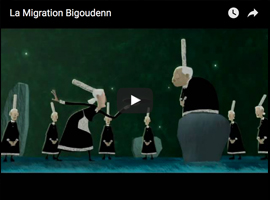The origin of Bigoudene lace.
In 1902, the situation of Breton fishermen became catastrophic: sardines disappeared from the coast - for several years. The longboats being armed for this type of fishing, the coastal populations were plunged into misery.
Two ladies of the local bourgeoisie then had the idea of introducing Irish lace in Bigouden country in order to ensure a minimum income for families. After the Exhibition of Feminine Arts of 1902, Mesdames Pichavant, de Pont-l'Abbé, and Chauvel, wife of the mayor of Combrit, brought in an Irish woman who initiated a Breton woman, Marie Gouzien who, in turn, taught it to the women and young girls from the small port of Île Tudy.
As one Ilienne said: “I earned fifty-six sous a day at this work, more than my husband. I was happy ; I rocked my little one with my foot, without leaving the work. But we had a hard time catching the point. It's twenty cents a square, and when we lost the point… ”.
In 1905, the nuns of the Holy Spirit of Ile-Tudy obtained the deposit of the lace made by the workers of the port, the Pichavant house taking care of the marketing.
Very quickly, a simpler point derived from Ireland but devoid of granite, developed on the rest of the Bigouden coastline, in particular at Kérity-Penmarc'h: the picot bigouden. The thread, very fine and very white, came from Ireland, via the Pichavant house and the sisters; after the 1914-1918 war, it was replaced by French DMC thread


